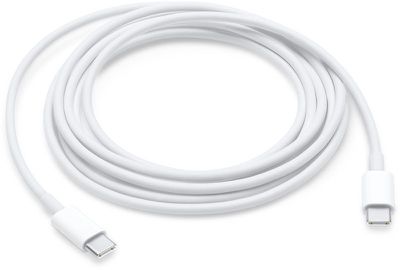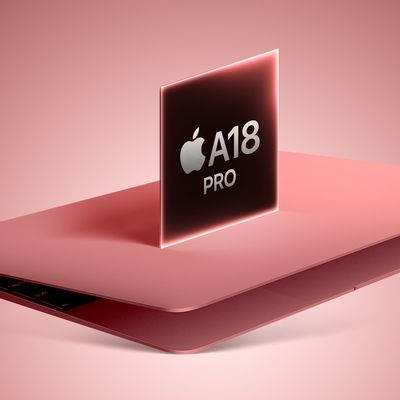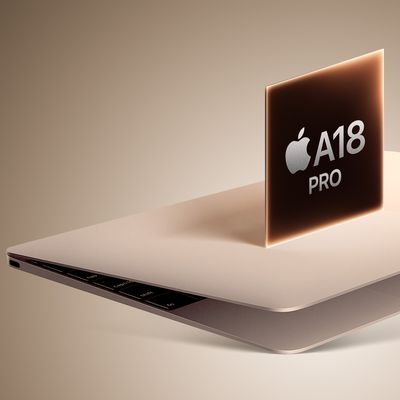USB4 Specification Merges Thunderbolt 3 and USB With Transfer Speeds up to 40Gb/s
The USB4 specification for a new version of USB was today published by the USB Implementers Forum [PDF] giving us details on what to expect from the next-generation USB architecture following a preview back in March.
USB4 is a major update that "complements and builds upon" the current USB 3.2 2x2 (USB-C) and USB 2.0 architectures. According to the USB-IF, the USB4 architecture is based on Thunderbolt, doubling the maximum bandwidth of USB and allowing for multiple simultaneous data and display protocols.

The USB-IF outlined key specifications of the USB4 architecture, such as 40Gb/s speeds (twice the current 20Gb/s maximum) and backwards compatibility with USB 3.2 and Thunderbolt 3.
- Two-lane operation using existing USB Type-C cables and up to 40Gbps operation over 40Gbps certified cables
- Multiple data and display protocols that efficiently share the maximum aggregate bandwidth
- Backward compatibility with USB 3.2, USB 2.0 and Thunderbolt 3
USB4 will use the same USB-C connector design as USB 3, which means manufacturers will not need to introduce new USB4 ports into their devices.
Apple's newest Macs offer support for USB-C and Thunderbolt 3, which means most Mac users are already experiencing USB4 speeds when using Thunderbolt 3 cables and devices, but USB4 will make Thunderbolt-style speeds the new default and it will lower the cost of devices that use these faster transfer speeds.
USB Power Delivery will be required in devices built for USB4, which also means we can expect to see higher-powered chargers with multiple USB4 ports.
Though the USB4 specification is complete, it will still be some time before we can expect to see devices that take advantage of USB4. It typically takes at least a year for new products to come out following the finalization of a new specification, so it will be late 2020 or beyond before we begin seeing USB4 devices.
Popular Stories
Apple is not expected to release a standard iPhone 18 model this year, according to a growing number of reports that suggest the company is planning a significant change to its long-standing annual iPhone launch cycle.
Despite the immense success of the iPhone 17 in 2025, the iPhone 18 is not expected to arrive until the spring of 2027, leaving the iPhone 17 in the lineup as the latest...
Language learning app Duolingo has apparently been using the iPhone's Live Activity feature to display ads on the Lock Screen and the Dynamic Island, which violates Apple's design guidelines.
According to multiple reports on Reddit, the Duolingo app has been displaying an ad for a "Super offer," which is Duolingo's paid subscription option.
Apple's guidelines for Live Activity state that...
Apple is planning to release a low-cost MacBook in 2026, which will apparently compete with more affordable Chromebooks and Windows PCs. Apple's most affordable Mac right now is the $999 MacBook Air, and the upcoming low-cost MacBook is expected to be cheaper. Here's what we know about the low-cost MacBook so far.
Size
Rumors suggest the low-cost MacBook will have a display that's around 13 ...
Govee today introduced three new HomeKit-compatible lighting products, including the Govee Floor Lamp 3, the Govee Ceiling Light Ultra, and the Govee Sky Ceiling Light.
The Govee Floor Lamp 3 is the successor to the Floor Lamp 2, and it offers Matter integration with the option to connect to HomeKit. The Floor Lamp 3 offers an upgraded LuminBlend+ lighting system that can reproduce 281...
Belkin today announced a range of new charging and connectivity accessories at CES 2026, expanding its portfolio of products aimed at Apple device users.
UltraCharge Pro Power Bank 10K with Magnetic Ring
The lineup includes new Qi2 and Qi2.2 wireless chargers, magnetic power banks, a high-capacity laptop battery, and USB-C productivity accessories, with an emphasis on higher charging...
Now that the calendar has flipped over into January, steep discounts on popular Apple products have become more rare after the holidays. However, if you didn't get a new pair of AirPods recently and are looking for a model on sale, Amazon does have a few solid second-best prices this week.
Note: MacRumors is an affiliate partner with some of these vendors. When you click a link and make a...
Apple plans to introduce a 12.9-inch MacBook in spring 2026, according to TrendForce.
In a press release this week, the Taiwanese research firm said this MacBook will be aimed at the entry-level to mid-range market, with "competitive pricing."
TrendForce did not share any further details about this MacBook, but the information that it shared lines up with several rumors about a more...
The company behind the BlackBerry-like Clicks Keyboard accessory for the iPhone today unveiled a new Android 16 smartphone called the Clicks Communicator.
The purpose-built device is designed to be used as a second phone alongside your iPhone, with the intended focus being communication over content consumption. It runs a custom Android launcher that offers a curated selection of messaging...
























